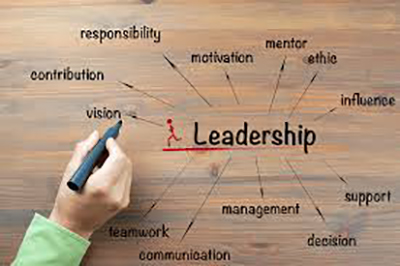Leadership refers to the processes and activities aimed at directing and influencing employee behavior within an organization. While the term itself—and its exact definition—remains debated in academic literature, a widely accepted common denominator is:
Leadership is any intentional effort to influence the behavior of others within an organizational context.
Traditionally, hierarchical leadership is assumed—where a superior (leader) influences a subordinate (follower). However, lateral leadership (among peers) and bottom-up leadership (from subordinates to superiors) are also recognized forms.
See also → leadership models.
Modes of Leadership Interaction
Leadership can occur in two primary forms:
-
Direct leadership: Through personal interaction between managers and employees
-
Indirect leadership: Through organizational design and policy structures
See also → leadership strategies.
Types of Employee Leadership
Direct (Interactional) Leadership
Also known as supervisory or interpersonal leadership, this type involves face-to-face management of employees, where leaders adjust their behavior to the individual’s needs and task requirements. It plays a central role in motivating performance, especially within the scope of individualized human resource management.
This leadership style includes the use of:
-
Motivational influence
-
Situational leadership techniques
-
Person- and task-oriented behaviors
Relevant approaches include:
-
Transactional leadership: Based on exchanges (rewards and punishments)
-
Transformational leadership: Focused on vision, inspiration, and change
Indirect (Structural) Leadership
This form of leadership occurs through organizational frameworks and systems, rather than interpersonal interaction. It includes the strategic and structural design of the work environment and HR systems—such as:
-
Corporate policies
-
Performance systems
-
Work design
Top management or executive leadership typically assumes responsibility for structural leadership, which shapes employee behavior by influencing the context in which decisions are made.
Interaction Between Direct and Structural Leadership
Direct and structural leadership are interdependent. Structural elements can enable or limit interpersonal leadership, and interactional leadership can influence structural decisions. This duality ensures adaptability in leadership approaches depending on organizational needs.
Cultural Leadership
Sometimes viewed as an extension of structural leadership, cultural leadership involves influencing behavior through organizational culture, leadership values, and shared norms. It shapes how people think, act, and relate within the company without requiring continuous direct supervision.
« Back to Glossary Index





![15 Employee Offboarding Templates That Save Hours of HR Time [Free Downloads] 15 Employee Offboarding Templates That Save Hours of HR Time [Free Downloads]](https://i1.wp.com/www.hrcloud.com/hubfs/Header.png?w=150&resize=150,100&ssl=1)
